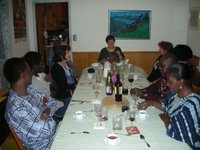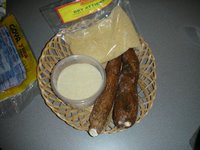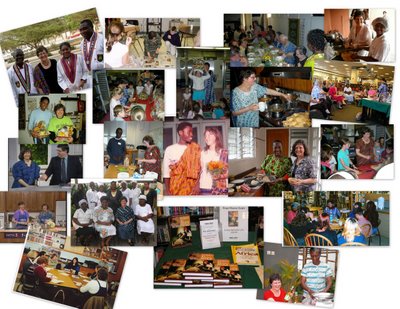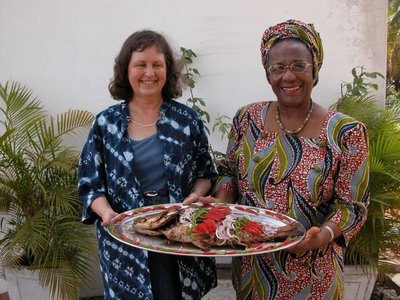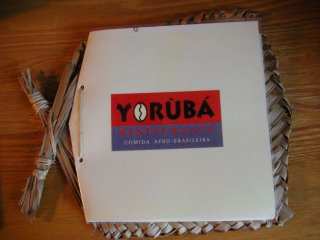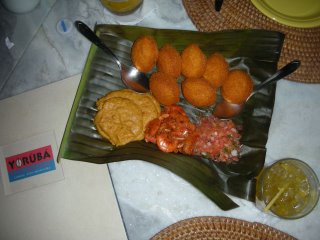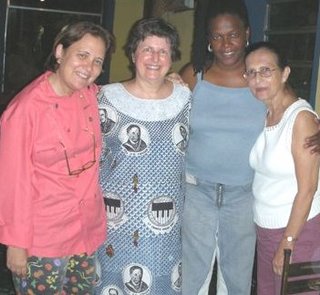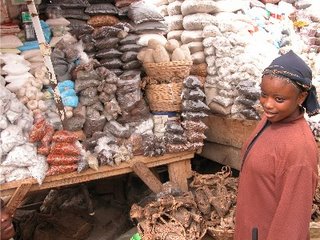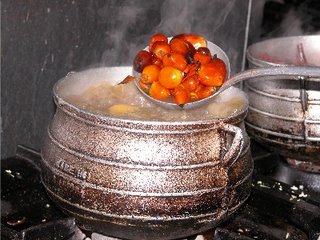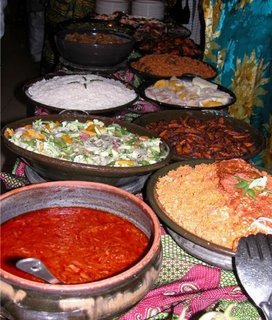Question #8: Why so few African restaurants?
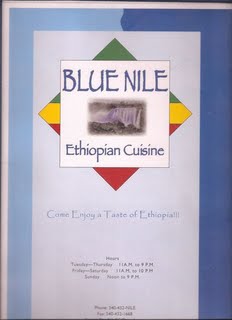 At a local community business event in central Pennsylvania recently I asked fellow business owners whether or not they'd eaten any African food. I got no positive responses. Zero. That included not having tasted the most popular and visible sub-Saharan African cuisine, Ethiopian. None of the people I spoke to had ever heard of injera (see my last few postings). I shared that information with Ethiopianist Harry Kloman in June, and he responded "There are about 250 Ethio/Eritrean restaurants in the U.S. There are more than 1,000 Chinese restaurants in New York City alone. Simple math!" (It's hard for me to believe the number can be that low for Ethiopian restaurants. Does anyone else have any information?)
At a local community business event in central Pennsylvania recently I asked fellow business owners whether or not they'd eaten any African food. I got no positive responses. Zero. That included not having tasted the most popular and visible sub-Saharan African cuisine, Ethiopian. None of the people I spoke to had ever heard of injera (see my last few postings). I shared that information with Ethiopianist Harry Kloman in June, and he responded "There are about 250 Ethio/Eritrean restaurants in the U.S. There are more than 1,000 Chinese restaurants in New York City alone. Simple math!" (It's hard for me to believe the number can be that low for Ethiopian restaurants. Does anyone else have any information?) People often ask me why there are so few African restaurants. An obvious reason is that they are non Euro-American cuisines, and not places where many North Americans have visited/done business/been stationed during a war/have family members, etc. The tourism industries that exist tend to favor safaris (Kenya or Tanzania) or wineries (South Africa), not culinary and cultural heritage. Thus there has been little exposure to and consequently, little hankering for, the foods of these places. The only exception might be small numbers of diplomatic, academic, religious or Peace Corps people.
Several West African restaurant owners have told me they had to include "Caribbean" in their restaurant names in order to attract customers (e.g., "Caribbean and West African Restaurant," or "Afro-Carib foods"). I've also been told that they need to include bar service and music groups to attract customers. Perhaps "Afro Pop" and "World Music" have an appeal that is better recognized than cuisine.
Another possibility is that there just have not been that many African immigrants into the U.S. Looking at recent immigration figures and trends shows that in 1967 there were reported to be about 35,355 African immigrants in the U.S., but by 2007 that figure had jumped to 1.4 million, most arriving after 1990. The countries with the highest number of immigrants in the U.S. are Nigeria (13.1 percent, or 185,787), Egypt (9.6 percent, or 136,648), Ethiopia (9.5 percent, or 134,547), Ghana (7.4 percent, or 104,842), and Kenya (5.7 percent, or 80,595). The 2007 figures further show half of all African immigrants residing in 7 states, in the following order: New York (10.7%), California (10.2%) , Texas (8.4%), Maryland (7.9%), Virginia (5.6%), New Jersey (5.2%), and Massachusetts (4.9%). I'm hopeful that the rapidly growing number of immigrants may create a larger market for African restaurants.
However, I also realize that in many parts of sub-Saharan Africa there is not a tradition of restaurant-going equivalent to that
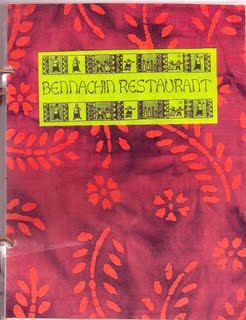 I've seen in Japan or Europe or Brazil. West African immigrants here say to me "Why would I go to a restaurant when I can make my own food, better, at home?" For weddings they may well hire an African caterer to provide quantity cooking, but they're not likely to go to a Nigerian or Ivorian or Ghanaian or Senegalese restaurant for a meal out.
I've seen in Japan or Europe or Brazil. West African immigrants here say to me "Why would I go to a restaurant when I can make my own food, better, at home?" For weddings they may well hire an African caterer to provide quantity cooking, but they're not likely to go to a Nigerian or Ivorian or Ghanaian or Senegalese restaurant for a meal out.Some people claim that West African food is less accessible to Western palates than other "exotic" cuisines. That is nonsense. (I've already stated my opinion of such things as the claim that Africans prefer "rubber tire" toughness to their protein sources (see my April 22, 2009 posting). Perhaps a goodly part of the blame falls to mistaken racist ideas that are linked to negative media images of Africa, and, by implication, the belief that African food is primitive, boring, "poor" in all senses: nutritionally, level of sophistication, variety, quality, etc. On the other hand, some of the family-style African restaurants (such as those favored by African taxi drivers) do pay scant attention to the presentation of the food and the surroundings in which it is served, and instead emphasize huge serving sizes. That seems to be changing as there are increasingly more places like Teranga, featured in my last blog, with increased emphasis on creativity, ambiance, and quality over quantity.
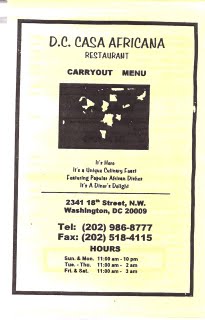
Labels: african cuisine, African food, african immigrants, african restaurants, kloman






